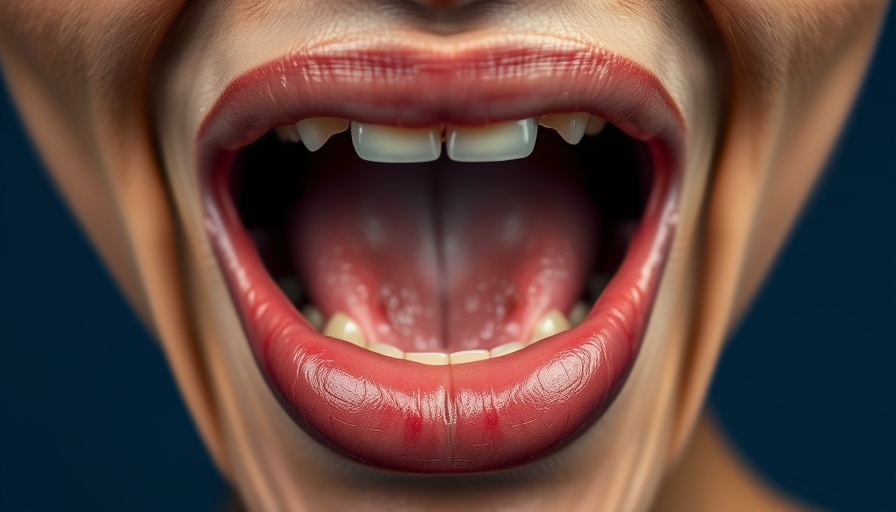
Understanding Eating Disorders: Anorexia and Bulimia
Eating disorders such as anorexia nervosa and bulimia nervosa represent complex mental health conditions that primarily affect adolescents and young adults. These disorders often manifest as extreme behaviors related to food, body image, and weight management, driven by psychological distress and societal pressures. As professionals in the field of mental health, it is crucial to understand the distinguishing characteristics of these disorders, the psychological motives behind them, and effective treatment modalities available for intervention.
In 'Anorexia vs. bulimia: teen eating disorder behaviors,' the discussion dives into critical insights on eating disorders and their implications for mental health professionals.
The Psychological Foundations of Anorexia and Bulimia
Both anorexia and bulimia are classified as eating disorders, yet they exhibit different behavioral patterns. Anorexia is characterized by an intense fear of gaining weight, leading individuals to restrict calorie intake to dangerously low levels, often coupled with a distorted body image and an excessive focus on thinness. In contrast, bulimia involves cycles of binge eating followed by compensatory behaviors such as purging, excessive exercise, or fasting. Understanding these behaviors within the framework of psychological conditions like anxiety, depression, and trauma provides insight into the deep-rooted issues that may contribute to the development of these disorders.
Intersection of Eating Disorders and Mental Health Issues
It is widely recognized that eating disorders frequently co-occur with other mental health conditions. Adolescents suffering from anorexia or bulimia often grapple with anxiety disorders, depression, and low self-esteem. Moreover, emerging research suggests a significant correlation between trauma, PTSD, and the onset of these eating disorders. Mental health professionals should consider a comprehensive evaluation of co-occurring disorders when assessing individuals for anorexia or bulimia, as this can inform holistic and effective treatment plans.
Impact of Societal Pressures on Body Image
Body image distortion is prevalent in individuals with eating disorders, perpetuated by societal ideals that often glorify unrealistic standards of beauty and thinness. The influence of social media and pervasive marketing strategies exacerbate these pressures, particularly among vulnerable adolescents. Addressing these societal factors is essential; mental health awareness campaigns can foster healthier attitudes toward body image while encouraging self-acceptance.
Effective Treatment Approaches for Anorexia and Bulimia
Successful treatment of anorexia and bulimia requires a multidisciplinary approach, integrating psychotherapy, nutritional support, and, when necessary, medication. Evidence-based therapies such as Cognitive Behavioral Therapy (CBT) and Dialectical Behavior Therapy (DBT) have been shown to be effective in addressing the psychological components of these eating disorders. Additionally, anti-anxiety medications and antidepressants may be utilized to manage co-occurring symptoms of anxiety and depression, supporting overall recovery. The role of family therapy can also be significant, as involving family members can enhance the support system that is crucial for recovery.
Promoting Mental Health Awareness and Stigma Reduction
The stigma surrounding mental health and eating disorders often prevents individuals from seeking the help they need. As mental health professionals, advocating for mental health awareness and education is vital to reduce stigma and promote understanding. Providing resources and support for individuals facing eating disorders can empower them to take the necessary steps towards recovery.
Emphasizing Self-Care and Well-Being
In addition to therapeutic interventions, promoting self-care practices is crucial for individuals recovering from eating disorders. Strategies such as mindfulness, stress management, and developing healthy lifestyle habits can foster emotional regulation and resilience. Mental health professionals should guide their clients toward activities that improve mental well-being, such as balanced nutrition, regular physical activity, and adequate sleep.
Paving the Way for Future Research and Innovations
As our understanding of the complexities surrounding eating disorders evolves, ongoing research is essential in identifying effective treatment modalities and innovative approaches. Future studies should focus not only on biological and psychological factors but also investigate environmental and societal influences. This holistic perspective can contribute significantly to developing robust prevention programs and effective therapeutic interventions.
In conclusion, professionals in the mental health field play a pivotal role in understanding and treating anorexia and bulimia. Given the intricate interplay between psychological issues, societal pressures, and behavior patterns, a comprehensive approach is necessary to promote recovery. By fostering awareness and providing effective resources, we can help individuals achieve better mental health outcomes and reduce the prevalence of eating disorders among adolescents.
 Add Row
Add Row  Add
Add 




Write A Comment